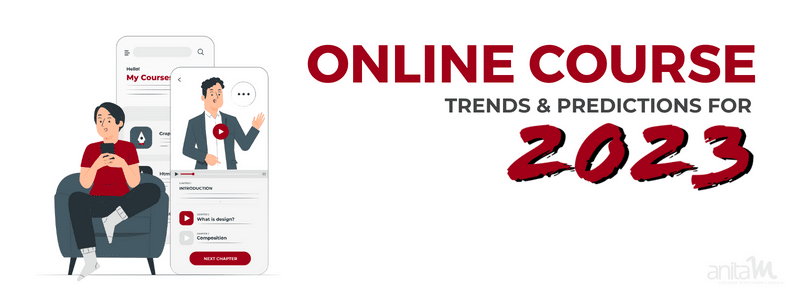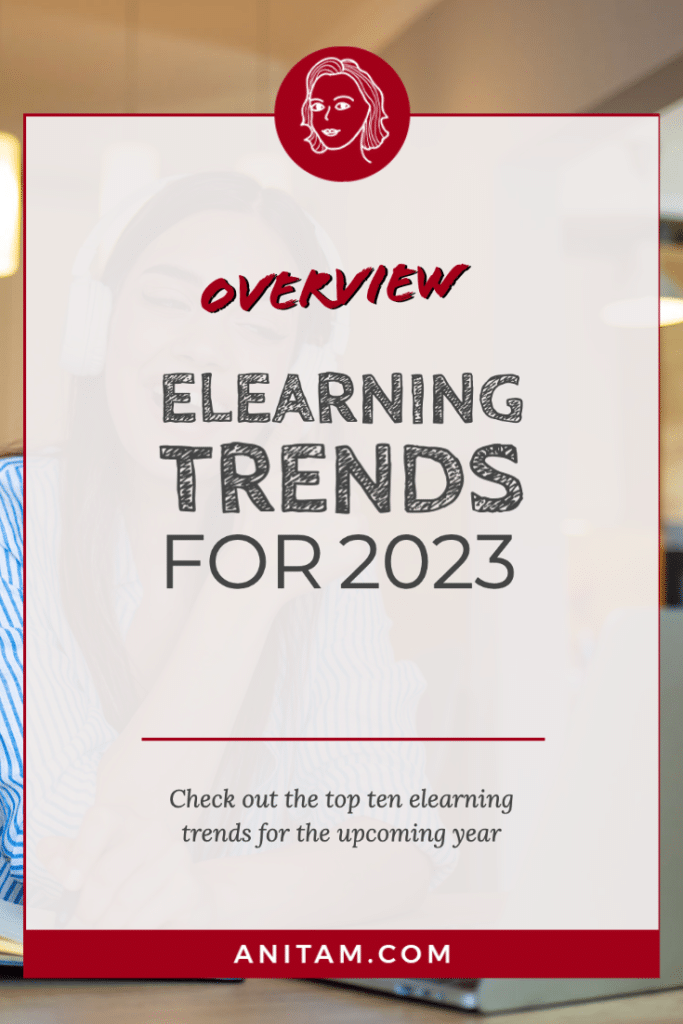Online education in its entirety is not a novel concept but fact is that after the pandemic many organizations and individuals have realized the importance of elearning to overall growth and up-leveling necessary skills to be relevant in today’s fast-paced job market.
While some of the terminology related to online learning may be difficult to grasp for a layperson, the most basic definition of elearning is the delivery of learning and training through digital resources, typically on the internet. And for those of you who may wonder, there are plenty of ways to learn online.

From online courses to online coaching sessions, provided by subject matter experts or organizations, no matter what type of skill one is looking to acquire, there is most certainly some type of elearning content available on the internet.
Fact is, no matter if the learning experience is created by an instructional designer for a company or a solopreneur to share their knowledge with their audience, in the forefront is always the learner who will consume the content and walk away with proof of successful learning because without the learners there is no need for any eLearning content.
But what are the upcoming eLearning trends that will influence how people learn? Listed below are the top eLearning trends for 2023 I’ll cover in this article.
- Microlearning
- Immersive Learning
- Mobile-first Approach
- Learning Analytics
- Social Learning
- On-demand Courses
- Personalized Learning
- Gamification
- Situated Learning
- LMS / LX Platforms
But before I dive into the eLearning trends for 2023, let’s take a look at the overall market growth of eLearning and why now is the time to implement online learning if you have not done so yet.
Online Course Market PREDICATIONS
While online learning has been experiencing a steady rise over the years, one indicator is that the eLearning industry is set to cross US$ 1 trillion by 2028 with highest growth in Southeast Asia where online learning is currently in its infancy.
There are several interesting projects like Creative Hub Asia that aims to improve the online learning environment by connecting skilled instructional designers with local companies and organizations and providing access to their learning experience platform (LXP) to enable personalized talent development for the future workforce in Vietnam.
TOP TEN Online COurse Trends 2023
While there may be way more emerging eLearning trends than presented on the top ten, it is important to remember the learners goals and needs when creating learning experiences. Therefore, the list below suppose to highlight the direction that eLearning is heading rather than be a must-have checklist for your next eLearning project.

1. Microlearning
The way that the world works is that we get short, simple-to-understand bursts of information. This is fine, for most situations. But when trying to learn something via an online course, this isn’t compatible with long lectures.
A successful online course is going to need to deliver flexible lessons that aren’t too long. We need to cut down on the length of our materials to get the best results. Try to aim for smaller courses that don’t have as much content, so it’s easier to process.
2. Immersive Learning
Immersive learning is going to be a powerful tool when it comes to courses, and the way that we experiment with this type of resource will shape how well online learning does. Embracing future-focused tech today will prepare learners to shine tomorrow.
For best results, providers would be wise to consider extended reality. It does a commendable job of making sure that the proper levels of engagement are achieved through things like AR, MR, and VR.
3. Mobile-first Approach
A lot of learners will use their mobile device to access courses and learn. To provide the best results, you’re going to need to be able to give them a mobile-friendly course that can be accessible from anywhere and also provide downloadable content.
To get the best results, try and aim for a mobile course that delivers smaller content that’s easier to process on a phone. Your learners will thank you for it in the long run.
4. Learning Analytics
Learning analytics are powerful tools for making sure that successful learning takes place. Naturally, the ideal results are the ones which emphasize studying and learning from the courses already in place. And furthermore assist in understanding the learning journey.
You need to be able to get to grips with analytics and study them in a fashion that will enable smart-decision making. Was option A more popular than option B? If so, how can B feature more prominently?
5. Social Learning
The curriculum that you create is half the battle when it comes to online courses – the new trend is building a community around that.
A community has a lot of benefits like helping to promote shared resources, discussion, and a community spirit that helps with the general ambience.
6. On-demand Courses
On-demand courses are eLearning courses that have already been produced by subject matter experts. As a result, the materials can be purchased and accessed immediately.
Using on-demand courses means a large number of learners can acquire new skills quickly, easily, and cost-effectively.
7. Personalized Learning
If you’re going to create an online course and community, try and go for lessons which have a practical point to take away from them and are unique to each learner because every learner is different after all.
With the power of predictive analytics and machine learning, tailoring learning experiences to specific learner needs is a must in 2023.
8. Gamification
One technique for online learning that has caught on in the last several years is gamification. Turning lessons into interactive games, with features like leaderboards, badges, and rewards for hitting tangible targets has been proven a successful method for learning.
Gamification, if used properly, can incentivize and motivate learners to participate and complete their online courses while competing against other learners.
9. Situated Learning
Finally, one of the big trends 2023 will bring is the implementation of situated learning which is the notion of knowledge and skill acquisition in context that reflects the way we use it in real life.
You need to design and create lesson plans and examples for topics that have identifiable, real-world applications. This will significantly help to improve retention of knowledge, and to keep learners engaged.
10. Learning Management System
With a multitude of apps, games, and other educational resources, it can be hard for everyone to keep track of learning progress and assignments. Learning Management Systems (LMS) aggregate all your learner’s resources where everything is stored, organized, and easily accessible.
The quality of LMSs has improved rapidly over the last decade, making online learning easier to manage and allowing for more student-teacher interaction. But a slight shift from LMS only to Learning Experience Platforms can be seen in the industry.
Tailored Content & Community of Practice
As you can see, 2023 is shaping up to slightly change the landscape of eLearning and course creation for individuals and organizations alike.
There is a definite shift towards creating more engaging content and offering unique learning paths. The learners today don’t want to be stuck in a traditional classroom environment when they are leading a busy life.
Offering that flexibility and personalization is one of the best things that you can do, because it enables access to a more sophisticated learning process. When there is more control over how you choose to learn, more people are inclined to commit to learning.
Ultimately, you have to provide support to learners in a way that works for them. Part of 2023 will involve giving learners control over how they choose to learn, because this will generate a far greater retention. Finally, it’s time to let learners decide how they use the resources you have available for them, as long as they are user-friendly and mobile-first.

